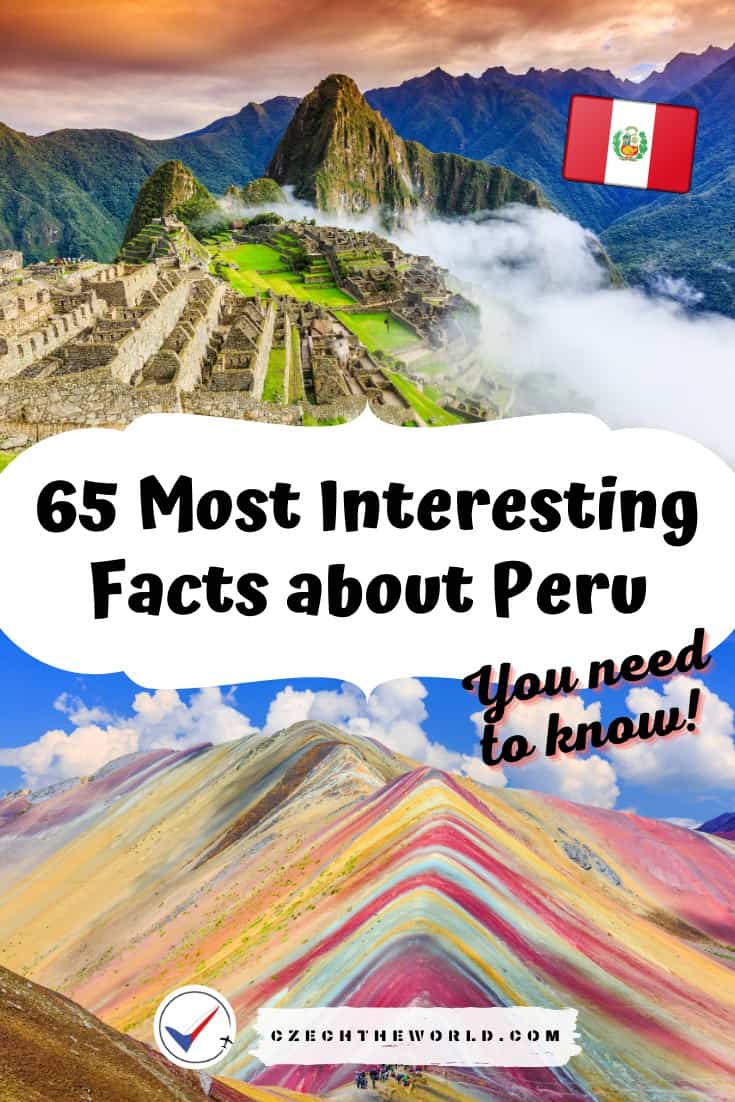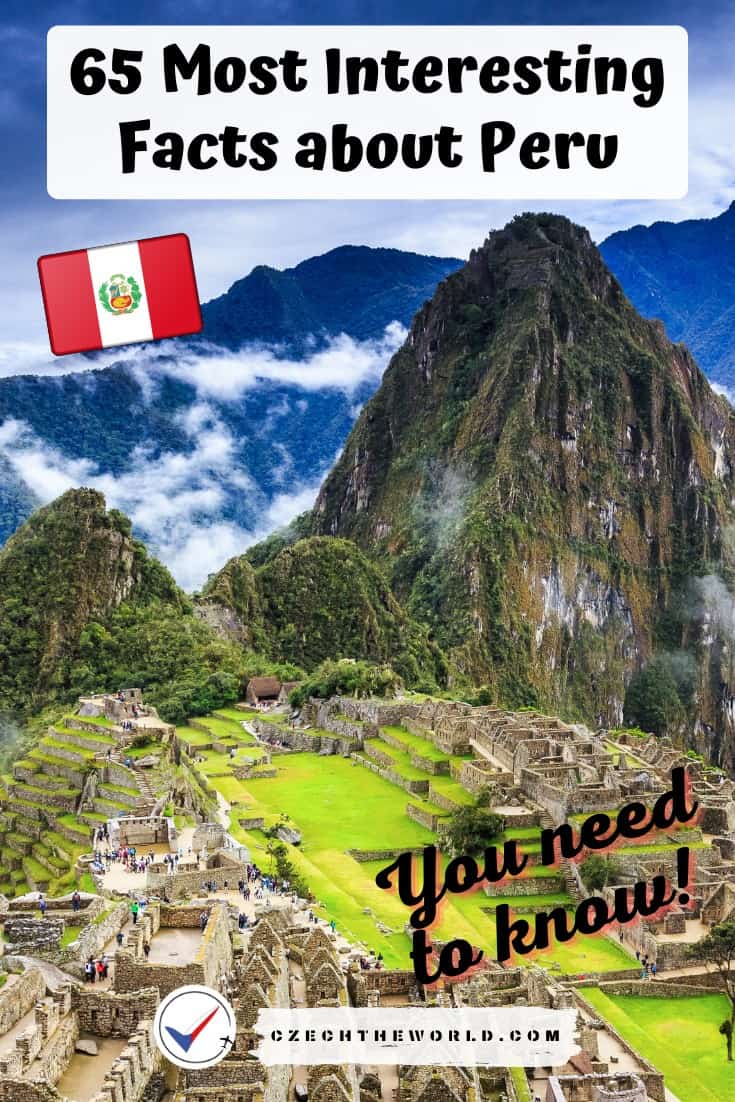65 Interesting Facts about Peru – You Need to Know!
Peru is a very special and unique country! We have prepared for you the ultimate collection of the most fun and interesting facts about Peru.
We have divided these facts into several categories – fun, geographic, historical, economic, Peruvian culture, food and drinks, fauna and flora, and more… Enjoy!
Obsah / Contents
Fun Facts about Peru
1) Guinea Pigs are a local delicacy
It may sound strange but eating guinea pigs is actually a delicacy in Peru. The guinea pig is called cuy and it’s mainly eaten in the Andes region of Peru, where they’re considered an important part of their culture.
Guinea pigs are different from other animals that people eat because they have hair instead of fur, which gives them a more gamey taste, and also because many cultures consider them pets rather than food.
Peruvian cuisine has been influenced by Spanish cooking since the Spaniards conquered the Inca Empire in 1532, so you can find some dishes with both European and indigenous influences on this menu – including roasted guinea pig!

2) Peruvians give yellow underpants as gifts on New Year’s Eve
Peruvians celebrate New Year’s by gifting one another yellow underpants. The tradition is based on the belief that if you wear a new pair of underwear during the first moments of the new year, you will have luck and prosperity for an entire year.
Makes sense, right? I mean, who wouldn’t want to start with a fresh new pair of undies?

3) Prisoners were banned to use chili sauce
Have you ever heard the saying „chili peppers make your genitals tingle“ or „spicy foods increase sexual appetite“? Chili sauce has been a popular food ingredient for centuries and when prisoners began to use it more often in their cooking, there were reports of increased sexual arousal among inmates. It led prison officials to ban its usage as an ingredient in many dishes served inside penitentiaries. [source]
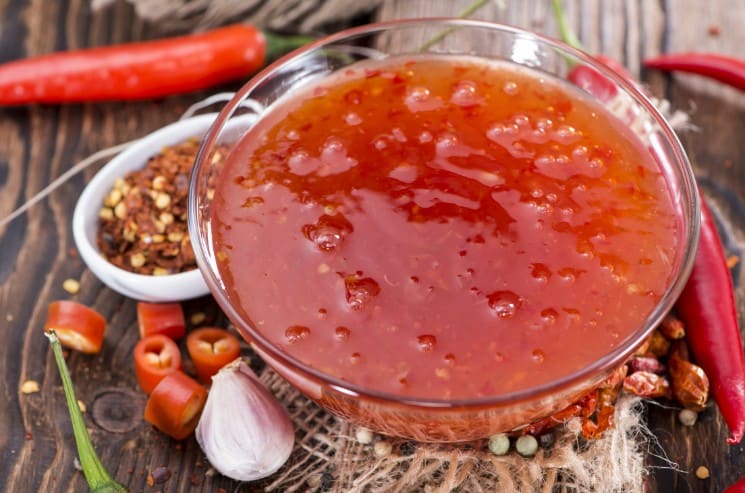
4) Incorrectly pronounced Machu Picchu means something very different
Correctly pronounced Machu Picchu (mah-choo peeK-choo) means “old mountain”. However, if you pronounce it incorrectly as (mah-choo pee-choo), it means “old p*nis”.

5) You can tell if a Native Quechua woman is single by her hat
Every woman in the Quechua tribe (they live near Machu Picchu) has a unique hat that tells you their marital status. Married women wear straw hats, where single women wear knitted caps.
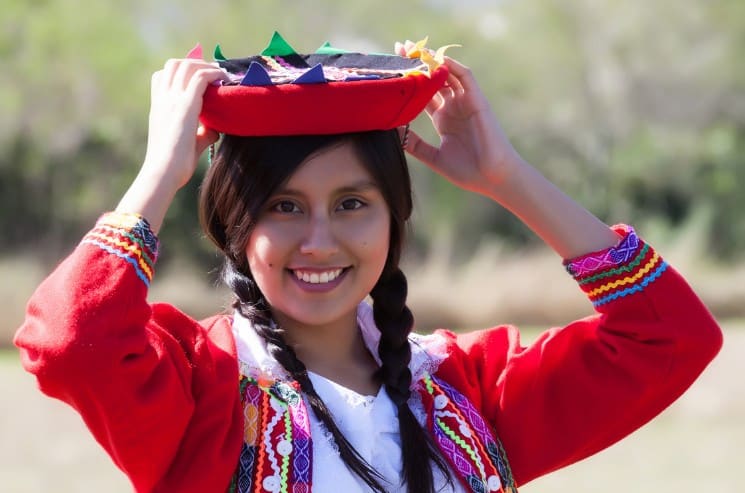
6) Peru used to be the world leader in exporting bird droppings
Did you know that Peru used to be the world leader in exporting bird droppings? This was back when the Inca Empire controlled most of South America. The Quechua Indians who lived there harvested guano from seabirds for fertilizer and export, which made up 30% of their gross national product (GNP).
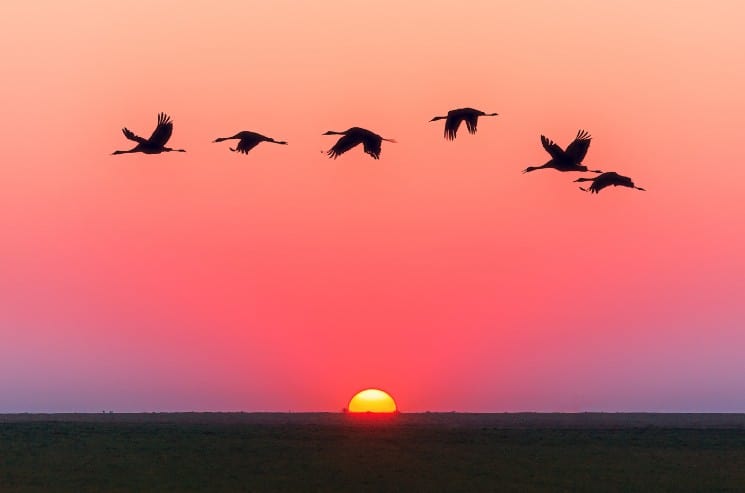
7) Ancient Peruvians would often bury food with their dead
The ancient Peruvians were a culture that followed strict burial rituals. One of these rituals was to bury food with the dead. This was done so that they could eat in the afterlife. The place where this ritual is most prevalent is Peru’s famous Nazca Lines.
Fast forward over 2 thousand years later and you can still find this custom alive in many parts of the world.

8) There are Pink Dolphins in Peru
Did you know that there are pink dolphins in Peru? They’re called the Amazon River Dolphin. The color comes from a type of algae they eat. You can spot them on tours down the Amazon River, but be careful not to disturb them – they need their space!
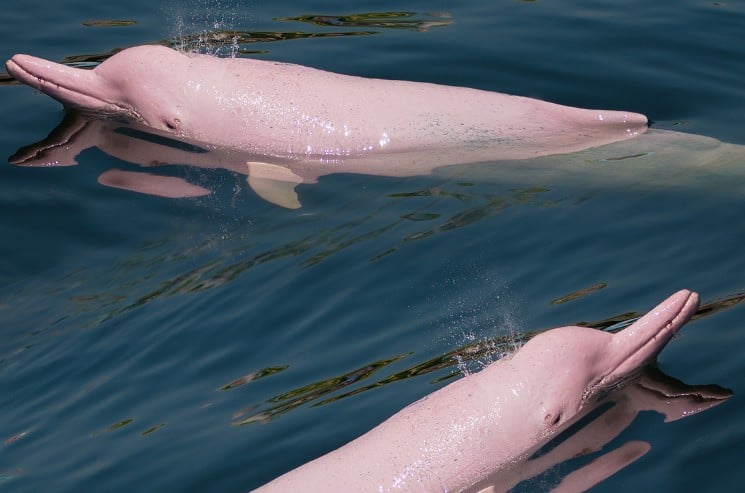
9) Peru can be typed on a single row of a keyboard
Peru is the only country in the world, whose English name can be typed on a single row of a standard computer keyboard.

10) Llamas spit whenever they feel in danger
Llamas spit whenever they feel in danger, which is a common defense mechanism. They have a gland at the back of their mouth that produces saliva with noxious chemicals. The lama’s saliva has an unpleasant taste and can cause pain if it touches human skin.
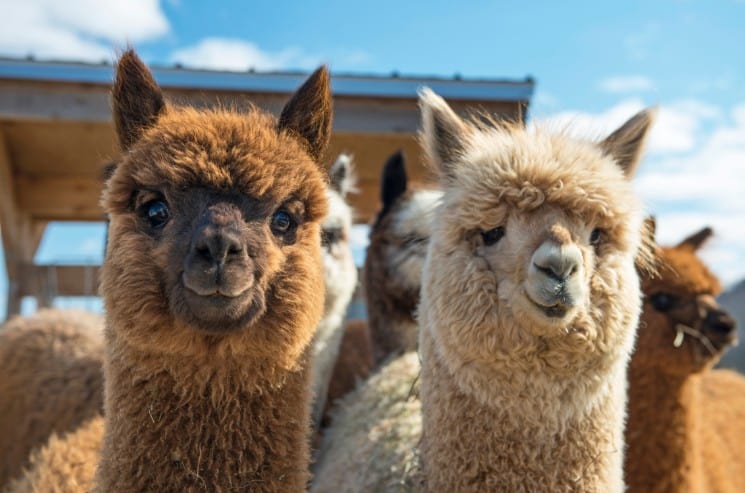
11) People live in the middle of Lake Titicaca on floating islands
One of the most interesting and unique cultures is found on Lake Titicaca. The Uros people live on floating reed islands on Lake Titicaca. These islands are made by weaving together layers of totora reeds (found abundantly in this region). Together, these layers form a sturdy foundation for their homes.
The Uros have been living on these islands since at least 500 AD but it’s unclear how they originally got there because they don’t seem to know either!
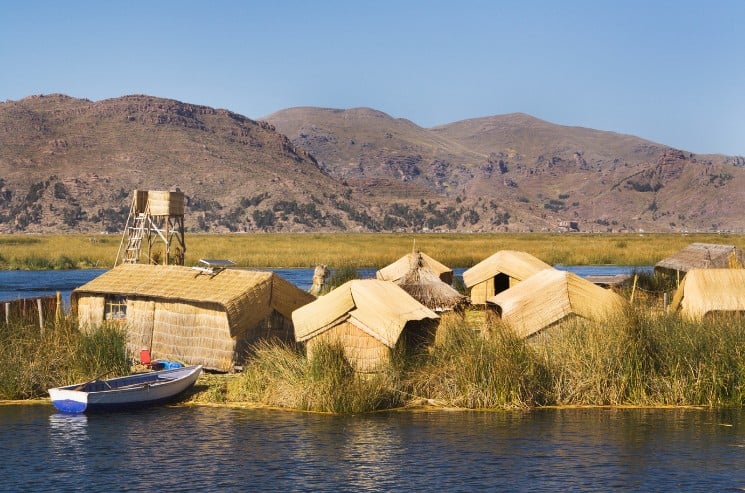
Geographic Facts about Peru
12) Peru has the highest sand dune in the World
In the desert of Peru, there is a massive sand dune that towers over all other sand dunes in the world. Cerro Blanco stands at an impressive height of 1,616 feet tall and spans for nearly 10 miles across. The sand dune continues to grow every year as more and more windblown sands accumulate on top of it.
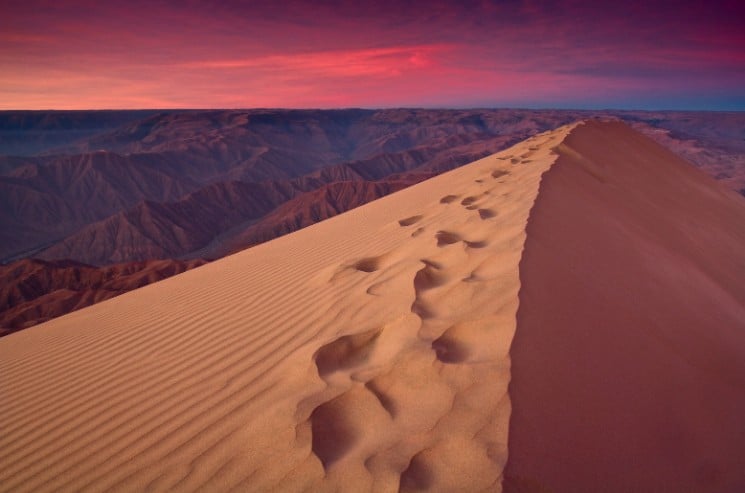
13) The highest navigable lake in the world is in Peru
Lake Titicaca is located at 12,500 feet above sea level. It’s the highest navigable lake in the world and is a major tourism destination for travelers who want to experience life as it was centuries ago. Lake Titicaca has its own ecosystem, which includes plants like cacti and vicuña. The only mammals living on Lake Titicaca are llamas that were introduced by humans over 4,000 years ago!
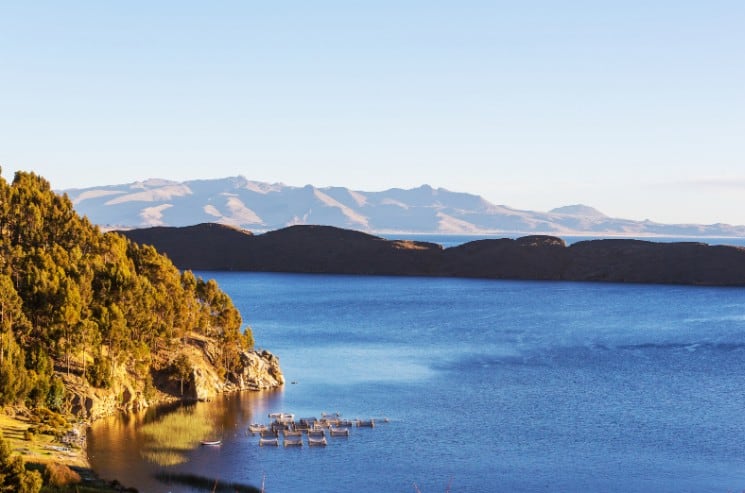
14) Peru is home to 90 different micro-climates
Peru is home to 90 different micro-climates that range from desert conditions on the coast to humid rainforests in the Amazon. It’s one of the main reasons, why Peru has one of the most diverse landscapes of any country in the world.
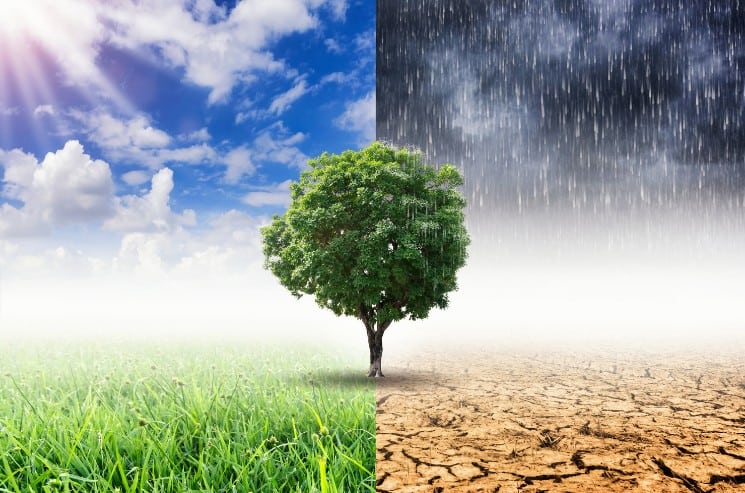
15) The Amazon River is the longest in the world
The Amazon River is the longest river in the world. It runs 4,000 miles from Peru to Brazil and is home to many different species of animals like piranhas, anacondas, and jaguars. The Amazon rainforest accounts for one-fifth of all known animal species on earth!

16) Peru is home to the deepest canyon in the world.
Cotahuasi Canyon in Peru is the deepest canyon in the world. It is 11,000 feet (3,354 meters) deep! The Cotahuasi River flows through this valley and forms several waterfalls before emptying into Lake Titicaca.
The Cotahuasi region is home to many different types of flora and fauna found nowhere else on Earth. This includes a type of frog that has adapted to live only at these altitudes – living above 4,500 meters (14,764 ft) high.
A visit to this ancient area will provide you with an adventure unlike any other as you explore one of the most beautiful places on earth!
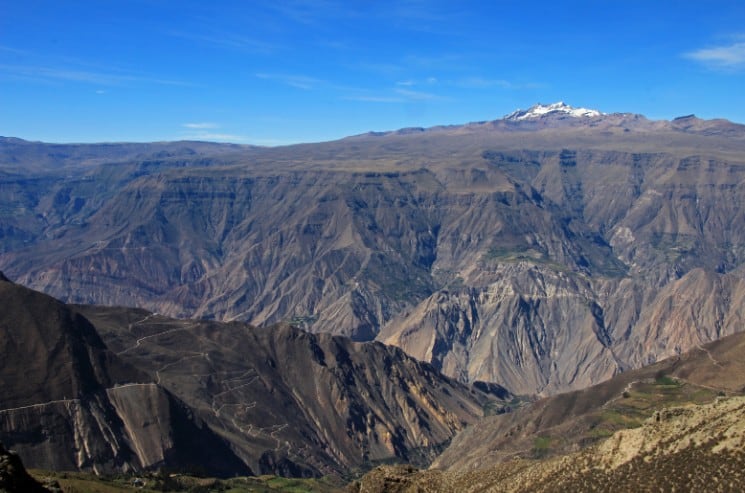
17) Amazon Rainforest covers two-thirds of Peru
Exploring Peru is a great way to experience the Amazon Rainforest. This ecosystem covers two-thirds of Peru and contains more than half the world’s species of birds, mammals, and amphibians. It produces 6% of the Earth’s oxygen.
The rainforest has been shrinking rapidly for decades due to deforestation, with an estimated 27 million acres lost between 1979 and 2013.
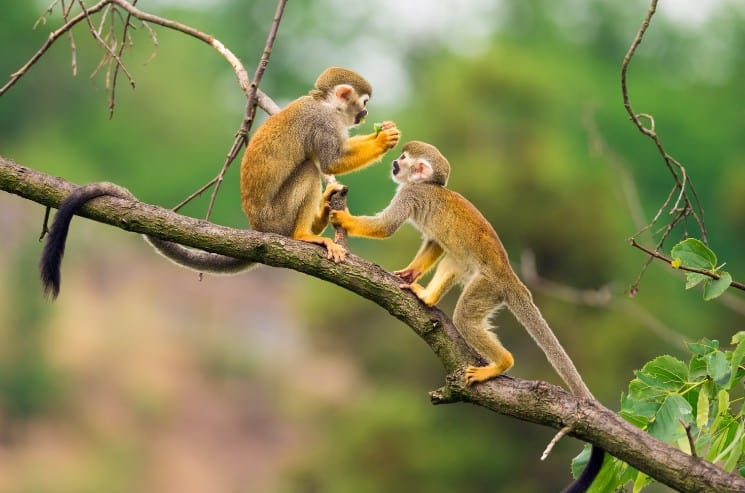
18) The Atacama Desert is the driest place on Earth
The Atacama Desert located in Peru and Chile is the driest place on Earth. It’s so dry that it’s impossible to grow anything there, which means no food crops or grazing for animals can survive. The only thing living in the desert (besides a few humans) are tiny microorganisms that can live without water because they get their moisture from minerals instead of plants.
There are some places, which have had just 1 inch of rainfall in the past 30 years.
In fact, it’s so dry that many people believe that this is what Mars might look like. But if you’re planning to visit, don’t let the lack of water scare you away! There are several activities for visitors to do, including sandboarding and visiting one of the two observatories.
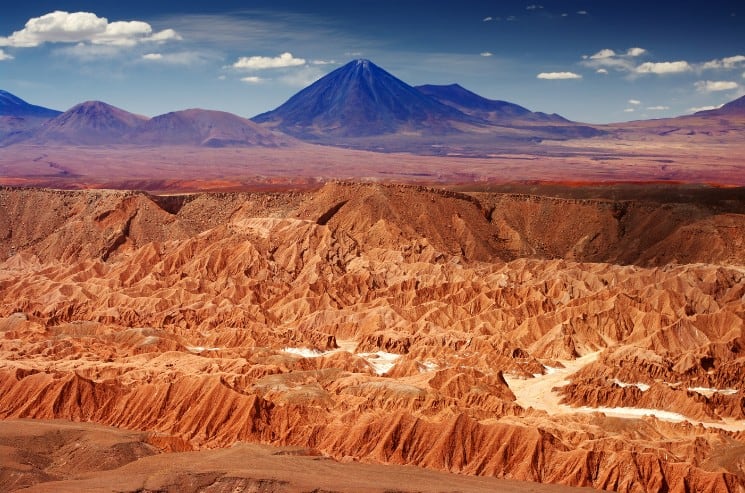
19) The Andes are the second-highest mountain range in the world
The Andes Mountains are the second-highest mountain range in the world (behind just the Himalayas), with some peaks reaching nearly 23,000 feet (7,000 meters). The Andean people have lived there for centuries at altitudes that would be deadly to many other cultures.
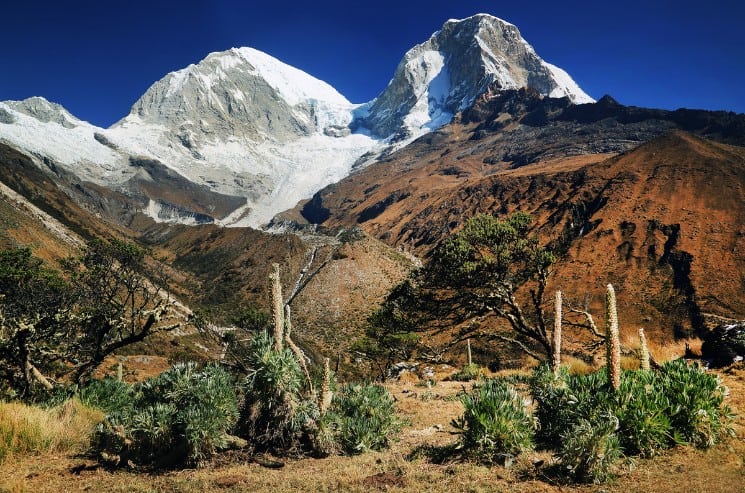
20) The longest left-breaking waves in the world are in Peru!
The longest left-breaking waves in the world can be found on a shoreline in Peru near small town Puerto Chicama. It’s not just surfers who come to see these waves, that stretch for more than 2 km. Long ago before surfing became popular as a sport, these waves were used by ancient cultures like the Incas to send messages across oceans.
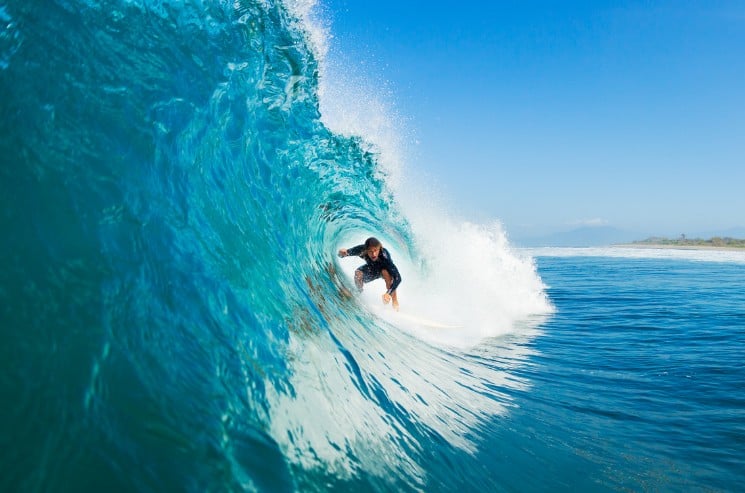
21) Machu Picchu is one of the New Seven Wonders of the World
It’s no secret that Machu Picchu is one of the most beautiful places on Earth. It is a site of breathtaking natural beauty and an architectural wonder. This ancient Incan city was built at the height of the Inca civilization. It was rediscovered by Hiram Bingham in 1911 after being lost for centuries.
Machu Picchu sits high above the Urubamba River Valley in southern Peru, about 2 hours from Cusco by train or car. The best way to explore this place is to walk around and take it all in with your own eyes — the lush vegetation, terraced hillsides that seem to never end.

22) Peru is home to 12 UNESCO World Heritage Sites
When you think of Peru, do you think of Machu Picchu? The Nazca Lines? Or the Inca Trail? All three are incredible UNESCO World Heritage Sites. But did you know that there is 12 total in Peru, 8 of which are archaeological sites and 4 natural sites? If you’re looking for a place to explore with your family, consider these 12 amazing places!

23) There is an actual rainbow mountain in Peru
The rainbow mountain, or „mountain of seven colors“ as it is called by the locals, in Peru has been a source of fascination for centuries. It’s an actual mountain range with every color imaginable on its surface and surrounding peaks!
This natural wonder is aptly named for its beautiful colors and shapes that are created by layers of clay sedimentary rock.
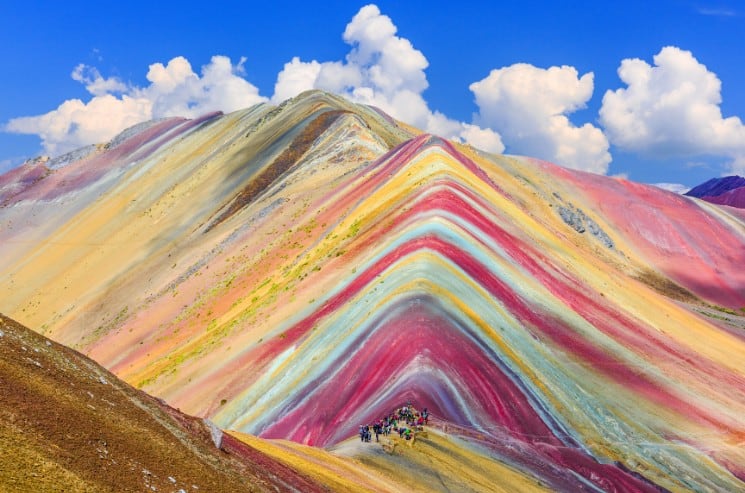
Historical Facts about Peru
24) Nasca Lines are one of the world’s greatest archaeological mysteries
Nasca Lines are one of the world’s greatest archaeological mysteries. They were created by a pre-Inca civilization that flourished in Peru 2,000 years ago. They cover an area of more than 500 square kilometers and can be seen from space. These mysterious lines are mostly drawn on desert surfaces outside the towns, but some extend into urban areas as well.
The Nasca people who made these lines have long since disappeared without leaving any written records about why they created them or what they represent to them. Archaeologists believe that the ancient lines served as ritual pathways, important astronomical observatories, and even territorial boundaries between competing cultures during their time period (200 BC – 600 AD).
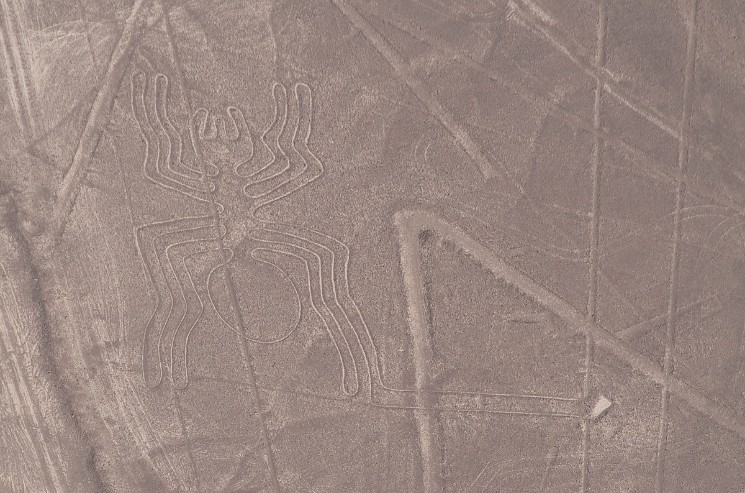
25) The first census was created by Ancient Incas
The ancient Incas created the first census in their empire. They would meticulously count every single person and animal, as well as collect all of the wealth that they owned. The information was then recorded onto a quipu where it was preserved for future generations to study. What’s even more interesting is that this method of counting has been proven to be more accurate than what we use today!

26) Cusco was the capital of the Inca Empire
Cusco was the capital of the Inca Empire and was also one of its most important cities. The city is located in Peru, at an altitude of 11,1500 feet (3,400 meters) above sea level. It’s a fascinating place to visit with great ruins and a rich history that can be explored on foot or by bike.

27) Peru has the oldest continuously operating university in the Americas
The University of San Marcos is the oldest continuously operating university in the Americas. It was established in 1551 and has been educating students ever since. It’s located just a few blocks from Lima’s city center – yet another reason to visit this beautiful country!
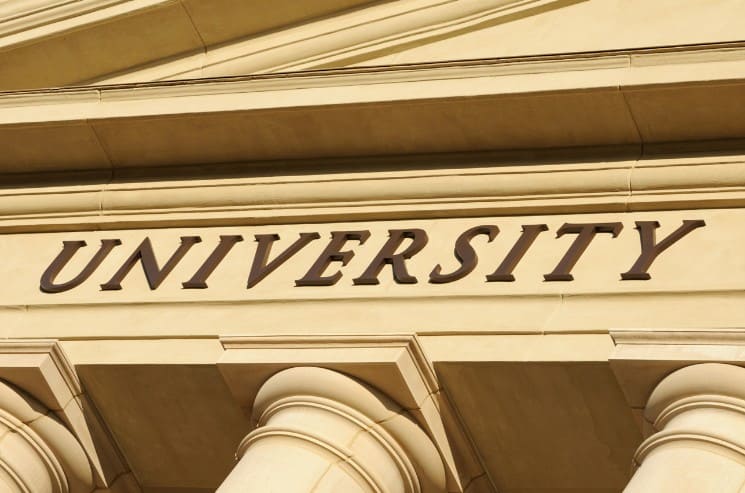
28) Most weaving techniques had been invented by the Peruvians
Weaving is an ancient art that spans the globe. Weaving techniques have been around for centuries, but they were perfected by the Peruvians. The Incans had a weaving technique called backstrap loom weaving which has been dated as far back as 3000 BC.

29) Mario Vargas Llosa is the only Peruvian Nobel prize winner
Mario Vargas Llosa is the only Peruvian Nobel prize winner. He won the Nobel Prize in Literature in 2010 for his novels, which are mostly about social criticism and aspects of Peruvian culture.

30) The Inca Empire was larger than imperial Rome
At its peak times, The Inca Empire was larger than the Roman empire. The empire stretched from what is now Ecuador all the way to Chile and covered over 1 million square miles. At its peak around 1300 AD, it had nearly 10 million inhabitants.

31) The streets in Cuzco are designed to align with the stars
It is believed by some historians that this was done for religious purposes. Others believe it was done as a way of showing off how important the Inca Empire was and making sure they were seen from all directions. Either way, there’s something about knowing you’re walking down an ancient street, aligned with thousands of years worth of history.
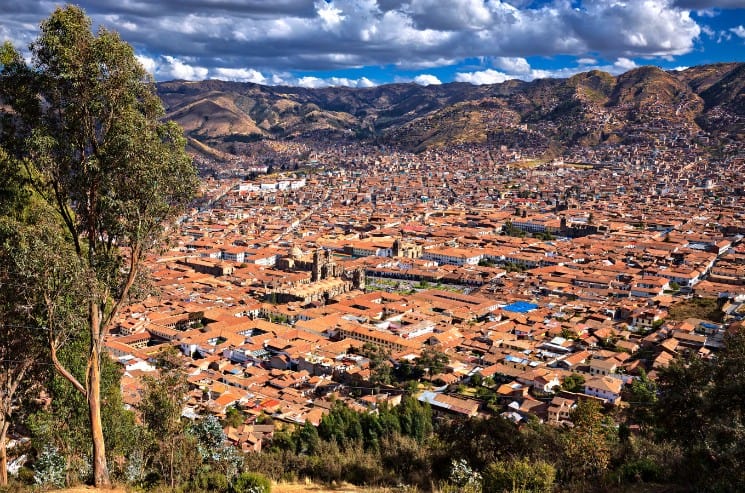
Facts about Peruvian Culture
32) Peruvian couple must enter a period of Servancy before marriage
The wedding ceremony is a very important part of Peruvian culture and the couple must be in Servancy before they can marry. This period lasts for one year, during which time both partners are required to live separately with their families and take care of them as if they were servants.
During this time, the woman must cook three meals a day for her partner’s family and do all household chores while the man should help his future father-in-law with work around the farm or home. If either partner wants to end this servitude before one year is over, there are two options: ask permission from your respective family or go through another marriage ceremony without any obligation on anyone’s behalf.

33) Only India has more shamans than Peru
Did you know that Peru has the second-largest number of Shamans in the world, second only to India? Most of these shamans are located in remote villages and many use healing methods passed down from ancient civilizations. Shamans often use a combination of natural herbs and plants, as well as animal parts such as teeth or claws, to create their potions.
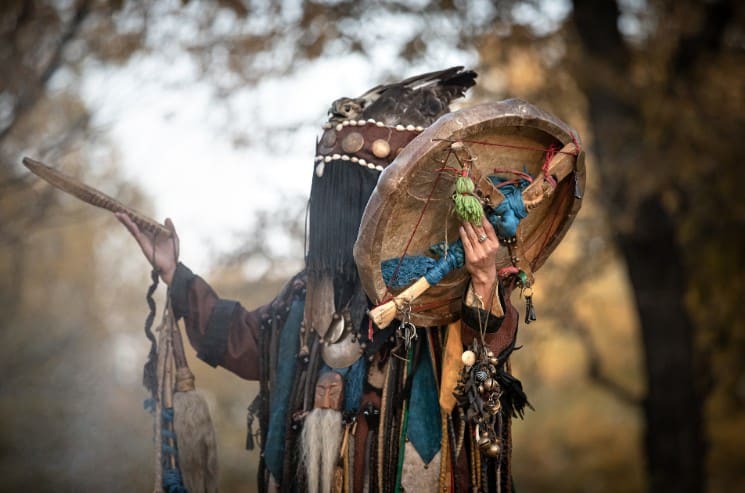
34) There are about 50 different languages spoken in Peru
Peru has 3 official languages: Spanish, Quechua, and Aymara, however, there are about 47 different native languages spoken there, which creates an interesting blend of cultures throughout the country. Most of them are spoken in the Amazon rainforest.

35) The world’s first hanging lodge is in Peru
The Skylodge Adventure Suites is a one-of-a-kind hotel located in the Sacred Valley of Peru. It’s not your typical room with four walls and a bed, but instead, it has 360-degree views of the valley below. The lodge offers amazing views from every window and even an indoor skylight that allows guests to watch the stars at night time or see sunrises in the morning.
Skylodge Adventure Suites is truly an adventure for anyone who wants to experience something new and unique when they travel!
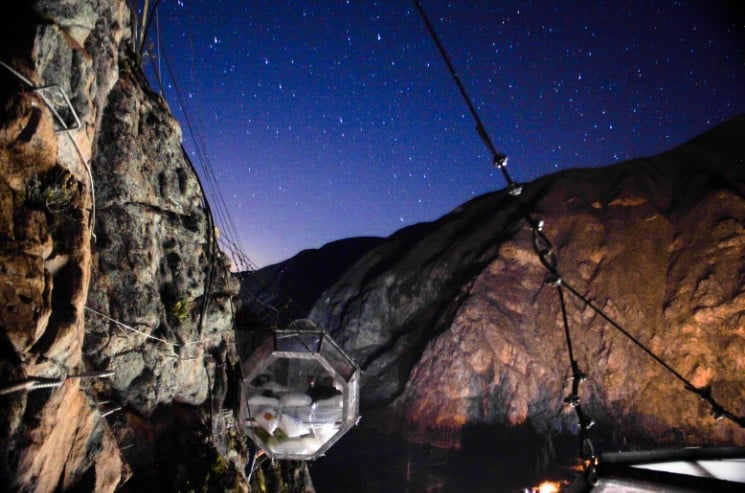
36) It takes 10 months to create a Peruvian poncho
Peruvian ponchos are more than just a fashion statement. They’re the perfect way to keep warm in colder climates and can be worn as an all-around blanket or over your shoulders like a shawl. They were created by the Quechua people of Peru who weaved them from alpaca wool, llama wool, cotton, or even vicuña fiber. It takes between 500 and 600 hours to create one Peruvian poncho with these materials – that’s about 10 months‘ worth of work!

Facts about Peruvian Food and Drinks
37) Peru has an ice-cream flavored fruit
Lucuma is a fruit that has been eaten for centuries. Many people claim that it tastes like ice cream. It is usually found in the Andes region of South America and can be found as far north as Mexico.
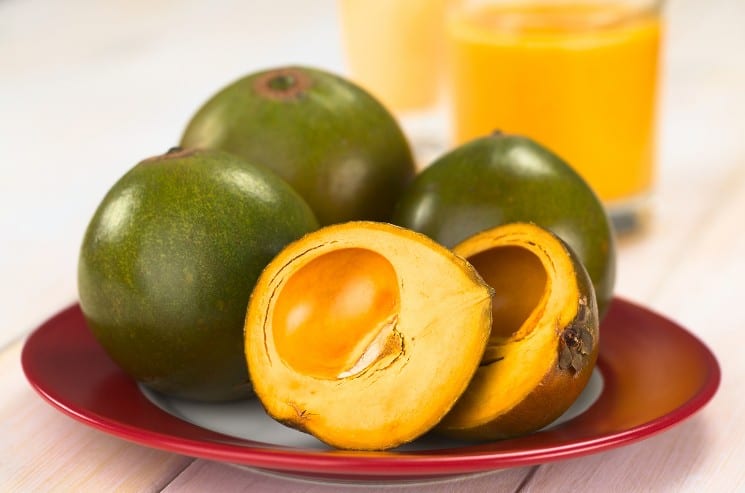
38) Peruvians like strange drinking games
The drinking games are popular with Peruvians. The most popular game they play is called „El Rueda“ which means „the circle.“ In this game, several people make a circle, and then they pass around a beer bottle with a single glass. Everyone has to sip from that one glass.

39) Peru is the home of South America’s biggest food festival
The Mistura Festival is South America‘s biggest food festival. The festival brings together over 230 chefs and 30 countries to celebrate the diversity of South America’s cuisine and culture. It’s a 10-day culinary festival, which brings almost half a million visitors every year.
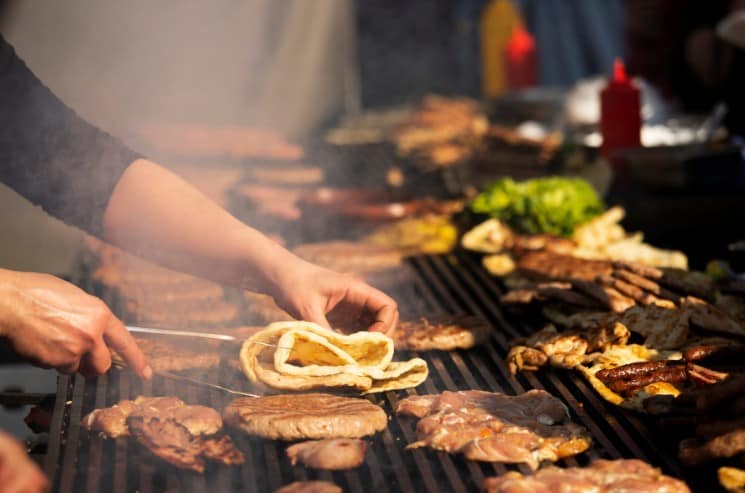
40) Tomato was first domesticated in the Andes
Tomato was first domesticated in the Andes and has been grown for at least 5,000 years. Tomatoes are part of the nightshade family (Solanaceae) along with potatoes, eggplants, capsicums, and other plants that produce edible fruits. The name „tomato“ likely comes from the Aztec word „xitomatl.“
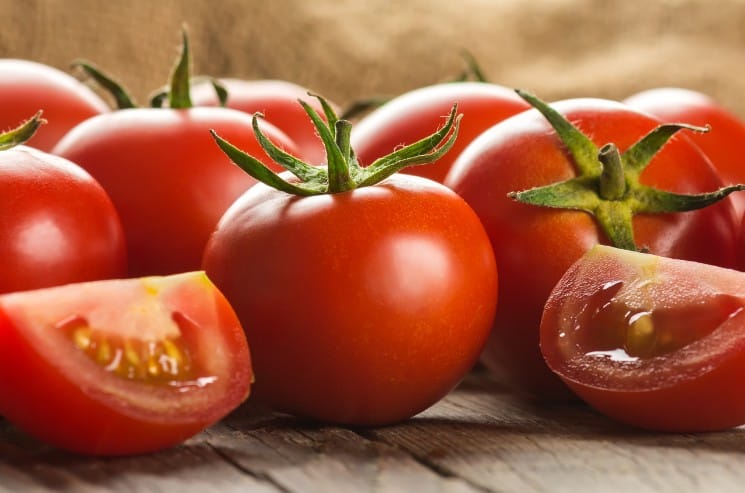
41) The peanut plant originates from Peru
It is no secret that peanuts are the main food source for many people. The most interesting thing about this popular legume is where it originated from. They were first grown in Peru, and have been cultivated there for over 7,000 years!
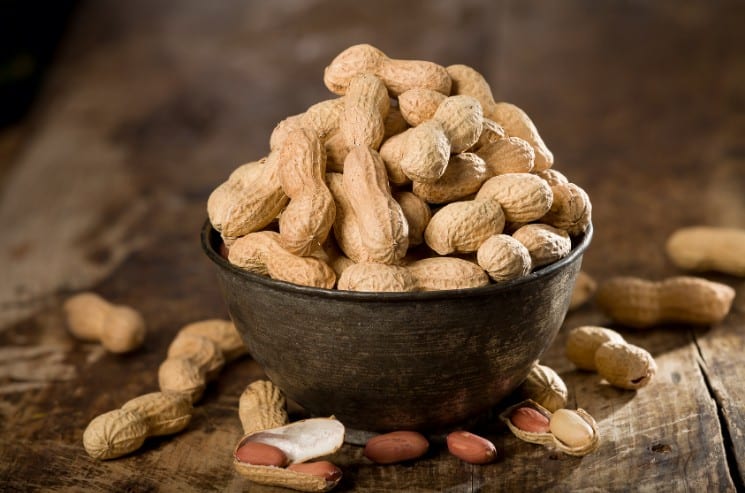
42) Quinoa also originates from Peru
Peruvian natives have been growing and eating quinoa for over 3,000 years. Quinoa is a type of plant that is grown for its edible seeds. The word „quinoa“ comes from the Quechua name of the crop which means „mother grain“.
Quinoa was once considered sacred to the Incas and was used as currency in trade with other tribes. It has also become popular among people who want an alternative to wheat or rice because it contains more protein than most grains, fiber, vitamins, and minerals.
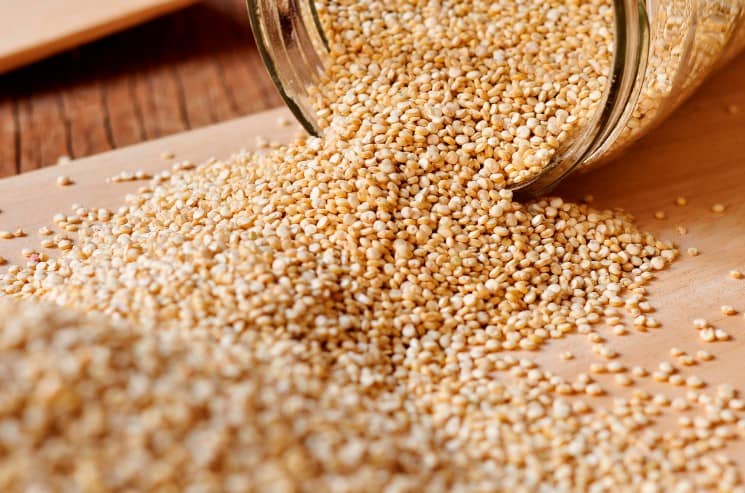
43) Peru’s national drink is The Pisco Sour
The Pisco Sour is Peru’s national drink. It has been considered a symbol of the country for over a century and is believed to have originated in Lima, Peru where it was originally made with wine and brandy. The recipe has changed over time as pisco became more popular than wine or brandy and now includes grape juice, lime juice, sugar syrup, egg white (or sometimes just egg yolk), and bitters.
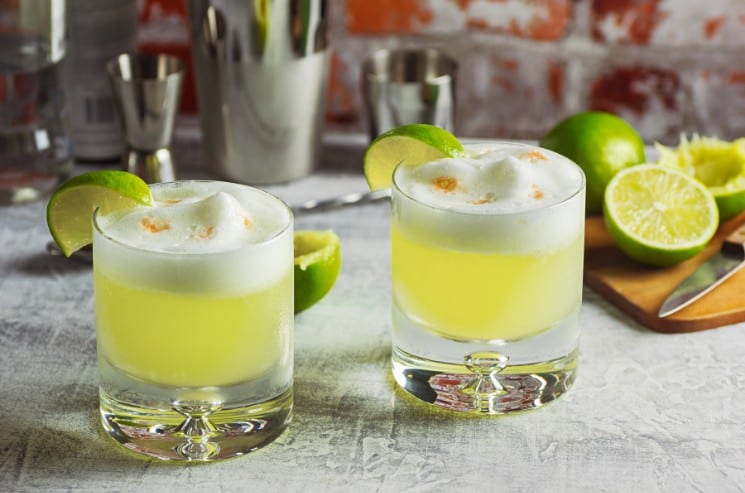
Facts about Fauna and Flora in Peru
44) The largest flying bird on Earth can be found in Peru
The Giant Andean Condor is the largest flying bird on earth. It can have a wingspan of over 10 feet, and it’s so tall its head is at eye level when standing upright!
This majestic creature can weigh up to 33 pounds and live for 70 years. They eat mostly meat, but they also enjoy small birds and rodents.
Condors are nocturnal, meaning that they sleep during the day and hunt their prey at night. Their eyesight is not great so instead, they rely heavily on scent to find food sources or nesting sites in high places like cliffs or trees.
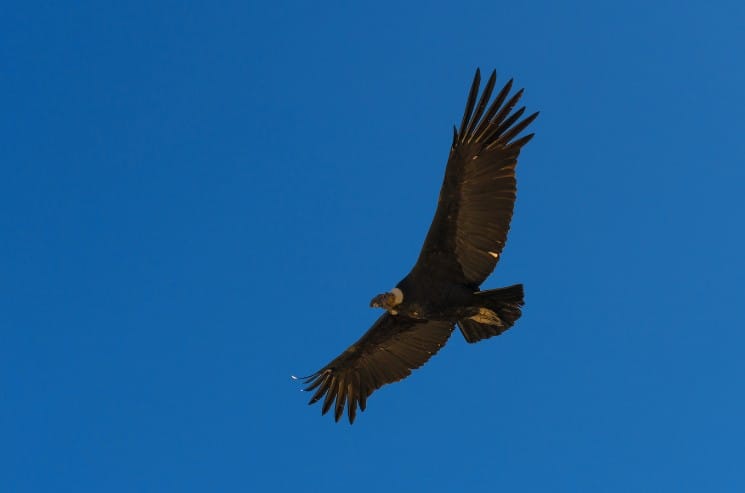
45) Peru holds the record for the most bird species sighted in one day
Peru hosts 1858 different bird species, which is the second most after Colombia. [source]
Birdwatcher Arjan Dwarshuis saw with his girlfriend, Camilla, 1001 species in 24 hours! This statistic makes Peru the country with the most sightings of birds in one day!
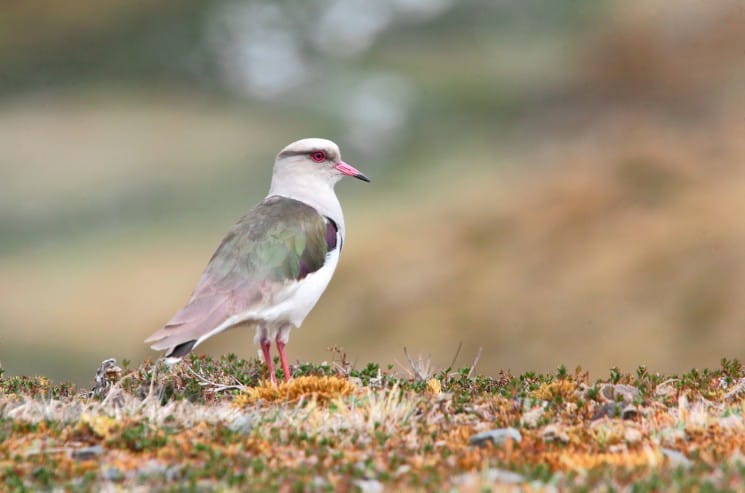
46) The world’s tallest flowering plant grows in Peru
Another Peruvian wonder is the Puya Raimondii, or otherwise known as the world’s tallest flowering plant. This unique plant can be found in regions of southern Peru and northern Chile, where it resides at an altitude between 1700-3000 meters above sea level. The massive blade-shaped leaves of this plant grow up to 12 meters tall!
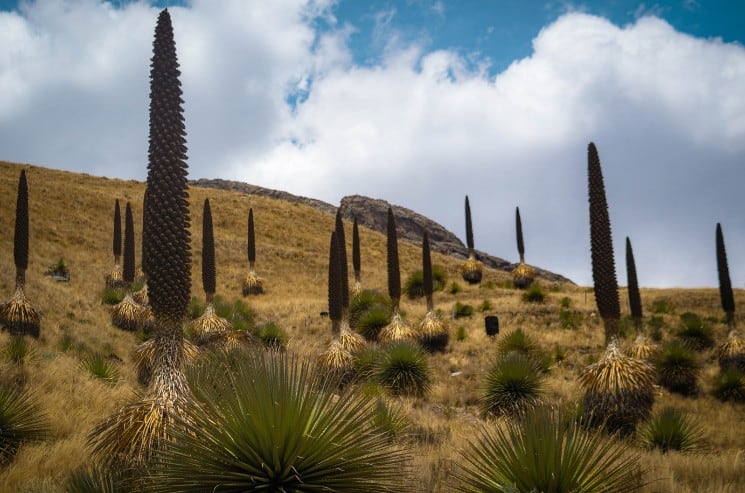
47) Camu-Camu fruit has 60 times more vitamin C than oranges
Camu-camu is a small, round lime-green fruit that grows in the Amazon rainforest. It has one of the highest concentrations of vitamin C found anywhere on earth (60 times more than oranges).
This superfood can be used to make juice or for other health benefits like helping with digestion and boosting immunity.
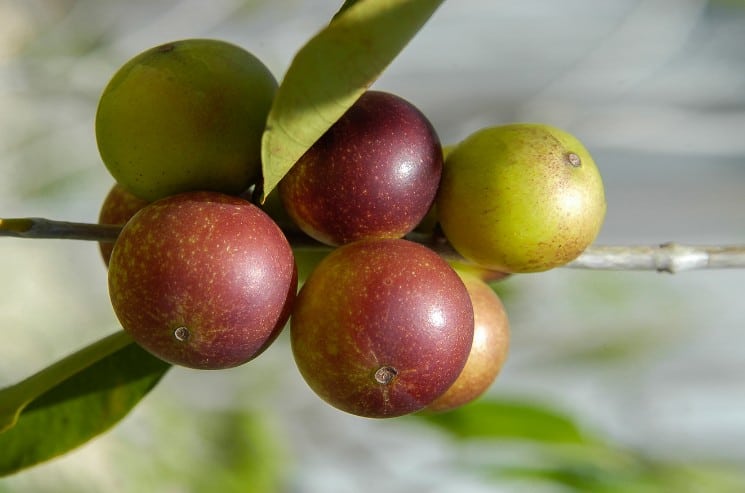
48) Cinchona is the national tree of Peru
Cinchona is a genus of trees in the Rubiaceae family that includes about 25 species found exclusively in the Andes Mountain Range. Cinchona is native to South America, Central America, and parts of Africa.
The bark from these trees is known as Quinine, which was used for centuries as medicine against malaria and other fevers. It’s also now used to make tonic water!
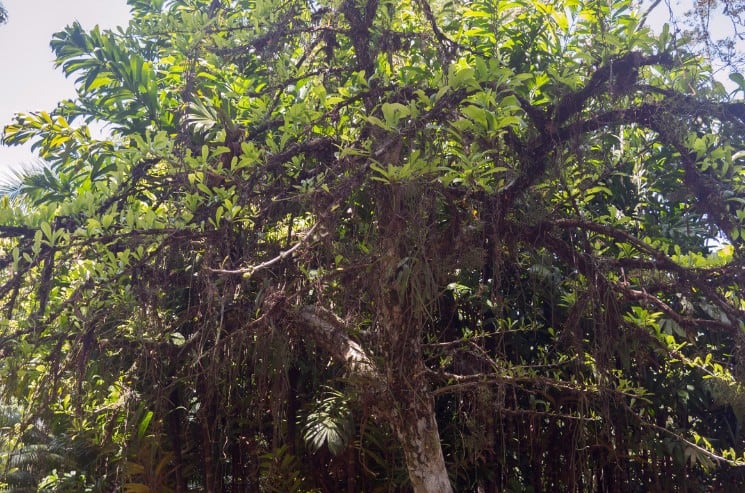
49) The national flower of Peru is Cantua
In Peru, the national flower is called Cantua. It has a refreshing scent and is known to represent love, beauty, and fertility. Cantua blossoms come in various colors such as pink, purple, red, or white with a yellow center.
The Peruvian people use Cantua flowers for medicinal purposes such as treating gastrointestinal pain and tummy aches.
During Incan times (1438-1533), the name of this plant was spelled Canta but later changed to Cantua in Spanish when it became more common outside of Peru’s borders.

50) Peru has the world’s largest population of alpacas
Peru has 87 % of the worldwide population of alpacas [source]. With around 4 million, it’s no wonder why they are so prevalent on farms and in towns here. You may notice them with their distinctive white fur and long ears.
The Peruvian people have been breeding these animals since ancient times as part of their culture. They use alpaca wool to make clothing like sweaters, coats, hats, and socks. Alpaca meat is also a popular delicacy, similar to lamb or beef but lower in fat content than either one! It tastes great when grilled or roasted with potatoes, onions, and peppers.
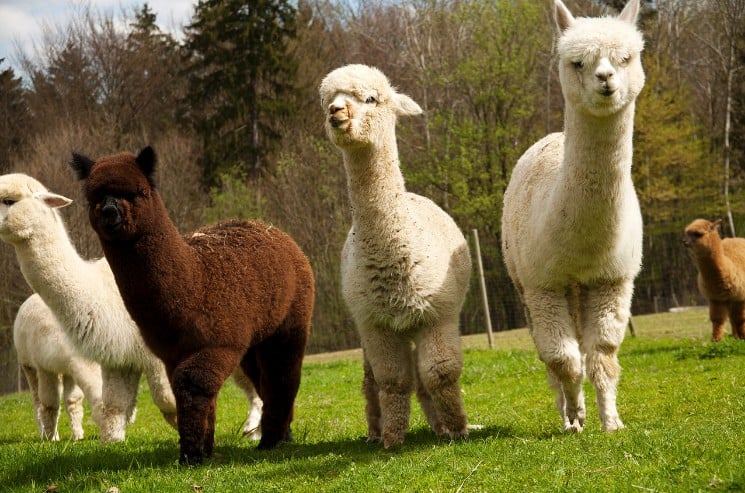
Facts about the Economy of Peru
51) There are 55 varieties of corn grown in Peru
Did you know that Peru grows more than 55 varieties of corn? That’s right! Corn is a staple food in the Peruvian diet, and with so many different types to choose from, it’s no wonder why.
The most common type of corn grown in Peru is called „choclo“ or „choclo largo.“ This variety has an elongated shape and can have red or yellow kernels. Another popular type of corn grown in Peru is the corns on the cob – they’re short-grained, roundish kernels that resemble popcorn when cooked.
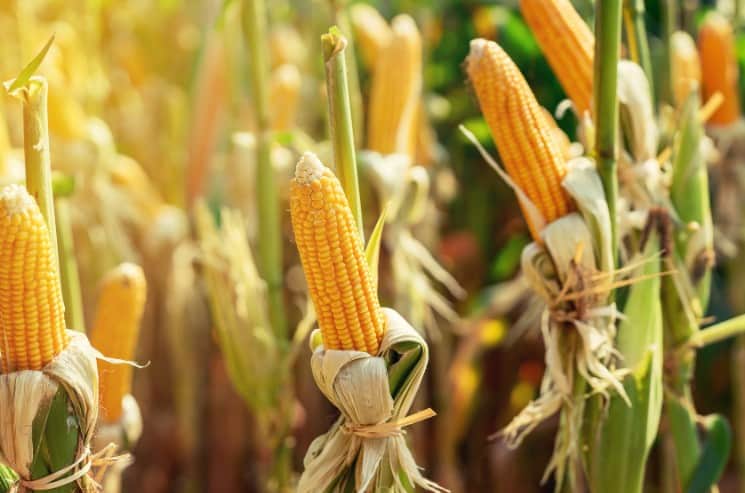
52) Peru is the 6th largest gold producer in the world
It’s no secret that Peru is a treasure trove of natural resources and has been a longstanding producer of gold. Peru is the 6th largest producer of gold and it’s estimated to produce around 7% of the world’s annual production which makes up about 3% of the global mining market.
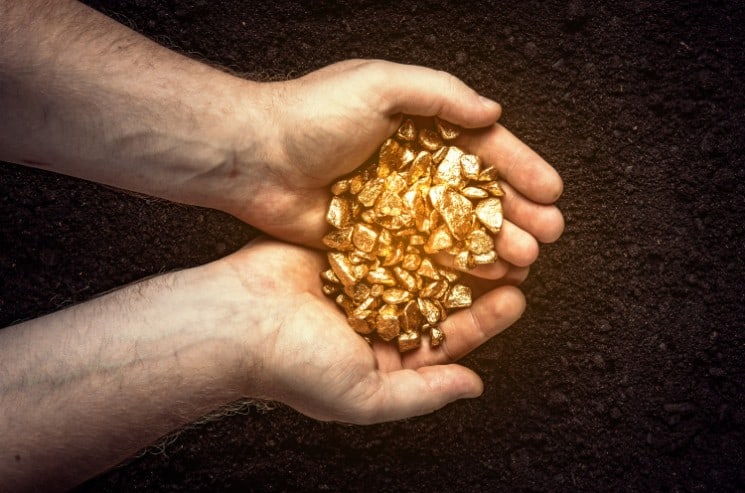
53) Peru is the 7th largest coffee producer in the world
Peru is the 7th largest coffee producer in the world. The coffee bean was introduced to Peru by French immigrants, and by 1884 it became a staple crop with over 200,000 acres of land dedicated to growing what would become one of the country’s most important exports.

54) There are more than 3,500 different kinds of Potato grown in Peru
Did you know Peru has over 3,500 different varieties of potato? The potatoes are grown in varying altitudes and climates across the country. This wide variety is thought to be a result of the country’s diverse geography and climate zones which range from desert to tropical jungle.
There is a variety of dishes being created with potatoes as their base ingredient and chefs have taken this opportunity by creating new recipes with unusual flavors like quinoa or sweet potato.
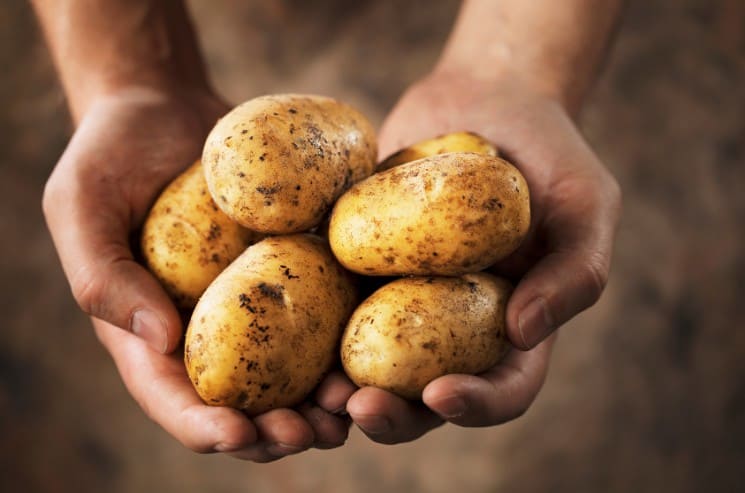
55) Salt is still mined in Peru in the way of Incas
One of the most interesting facts about this country is that people still mine salt in the way of the Incas today, following ancient methods using only sunlight and water.

Read also our other interesting facts collections:
- 53 Most Interesting Facts about Cuba
- 85 Most Interesting Facts about Argentina
- 15 Richest African Countries
Pin this article about Interesting Peru facts for later and to your friends:
Fun Facts about Peru
Geographic Facts about Peru
Facts about Peruvian Culture
Facts about Peruvian Food and Drinks
Do you like this post – interesting Peru facts? Share it with your friends:

